Our present days sea travel, with its `luxuries´ started
with the Monster-ships after the turn from 19th to 20th century, and technical
progress and innovations made us think "unbeatable" at sea ... This hybris
and belive in the technological progress was destroyed when the TITANIC sank after
its encounter off Newfoundland with an iceberg.
The beauty salons, fitness rooms, swimming pools,
firsts on German liners, and even wireless communications of today’s huge
cruise ships all got their start with the `floating palaces´ of a century and a
bit ago.
by Earl of Cruise
ss GREAT WESTERN, of GREAT WESTERN STEAMSHIP COMPANY, constructed by genius Isambard Kingdom Brunel - Sourece: Engineers Walk
ss GREAT BRITAIN of GREAT WESTERN STEAMSHIP COMPANY, constructed by genius Isambard Kingdom Brunel - Sourece: ART UK
In the first half of 19th century steam started
powering ships. No longer tedious and unpredictable voyages at sea. And with
the groundbreaking game changers GREAT WESTERN and then GREAT BRITAIN,
of GREAT WESTERN STEAMSHIP COMPANY. Both steam
ships had been designed and constructed by genius Isambard Kingdom Brunel,
the sea traffic was changed. And BLACK BALL LINE, a sailing
paket company from New York, ceased operations finally after 60 years in 1877.
rms LUSITANIA at end of inaugural record voyage 1907 - Source: Wikipedia
rms LUSITANIA at end of inaugural record voyage 1907, coloured version - own collection
When the world’s then largest ocean liner embarked prior
to its first transatlantic voyage in September 1907, thousands of spectators
gathered at the docks of Liverpool to watch. “She presented an impressive
picture as she left, with her mighty funnels and brilliant illumination,” wrote
one reporter. CUNARD’s rms LUSITANIA had been outfitted with a new type of engine that differed from that of its
rivals - and would go on to break the speed record for the fastest ocean
crossing not once, but twice. The difference to the others was: turbines. It
was an innovation that the Admirality forced CUNARD to go, as both liners had
been massively subsidised by the government. This and the hulls have quite a
resemblance to destroyers. This time, for the first, CUNARD was nearly at the
forefront of innovation.
rms MAURETANIA, towards the end of fitting out 1907 - own collection
While the German superliners had steamengines of
enormous dimensions, KRONPRINZESSIN CECILIE got the the biggest steam engines cylinders ever built for a civil vessel. But
when she emerged in 1908, she was outdated and outclassed by the nearly 15,000
GT bigger LUSITANIA and MAURETANIA.
This time the LLOYD stuck to the old technology far to long ... But never the
less, the KRONPRINZESSIN hold her market share, with over the top service and a
food quality and variety, that only the French could match.
KRONPRINZESSIN CECILIE entering New York - own collection
And while WHITE STAR was planing its behemoth´s of OLYMPIC class, with the
back up money of J.P. MORGAN, HAPAG
instead was thinking `biggest´. Albert Ballin, never a
friend of the expensive BLUE RIBAND race, went into the luxury - the real luxury on board. The IMPERATOR class vessels
did show public rooms of never before known grandeur. Since then salons with 5m
high cielings had never been realized. Except for the first class dining rooms
of the KAISER class liners with their domes in the center. And on board
VATERLAND and BISMARCK a totally new room concept/lay out was realised. Parted funnel uptakes made it
possible creating a new open floating room lay out. A first in the list of blue
prints for todays cruise vessels.
IMPERATOR of HAPAG, later BERENGARIA - colouring courtsey STEVE WALKER
Albert Ballin had a more moderate name in mind when the IMPERATOR was planed: EUROPA, but his friend and mentor pressed on the empirial name ...
AUGUSTA VICTORIA of HAMBURG AMERIKANISCHE PAKETFAHRT AKTIENGESELLSCHAFT - own collection
The wrong name spelling of the Empress AUGUSTE VICTORIA can´t any longer be cleared, when later rebuilt she got the correct spelling ... With AUGUSTA VICTORIA Albert Ballin inaugurated the modern cruise. She had double screw propulsion, and was a real novelty when contracted in 1887. She was the first major German built liner ever at Stettiner Maschinenbau AG Vulcan
Albert Ballins way into the `floating hotels´ started
with the AUGUSTA VICTORIA class liners, which became internationally known as the most luxurious
Transatlantic liners of their day, as for their offered food&beverage and
outstanding service, as for their oppulent outfitting - salons and cabins. MarkTwain for
instance, preffered the COLUMBIA of HAPAG, as well the LLOYD, because of their ordinary service and food, and
left no pleasant word for CUNARD. He later wrote about his experiences in `A
Tramp Abroad´ (free PDF, after signing in). In
June 1892 Twain quoted about his voyage on board HAVEL of NORDDEUTSCHER LLOYD:
"This ist the delightfulest ship I ever saw. If I were going to write a
book I think I would take a room in the HAVEL and ferry back and forth till the
book was finished." These German vessels, back then, had only been
rivaled in service and food quality by the COMPAGNIE GÉNÉRALE TRANSATLANTIQUE liners LA BOURGOGNE - LA BRETAGNE - LE CHAMPAGNE - LA GASCOGNE, and the
NORDDEUTSCHER LLOYD FLÜSSE (River) class vessels. These were the driving
competitors on the continent. Quite unregarded by CUNARD and the other British
lines in their rivalry ...
rms LUSITANIA,
shown here on its arrival to New York City in 1907, was one of the ships which
launched the modern era of leisure travel - own collection
Despite, between 1850 and 1900, three British
passenger lines - CUNARD,
INMAN and
WHITE STAR - dominated transatlantic travel.
Dissatisfied with the dominance of
British companies in the transatlantic mail packet trade, the US Congress
decided to begin a state-subsidized service of their own in 1845. The United States Postmaster General
Office invited tenders from US-based shipping companies for a service from New York
City to ports in Northern Europe. Four companies, including a group
led by Collins, submitted their proposals. A five-year tender of carrying mail
from New York to Bremen
was eventually awarded to the OCEAN STEAM NAVIGATION COMPANY, led
by Edward Mills, which began service in 1846. The company seized operations
because of economic problems. But as a result Bremen´s Konsul Meier was able
founding years later, in 1857, the NORDDEUTSCHER LLOYD.
ss BREMEN of 1857, the first vessel for the new established NORDDEUTSCHER LLOYD - own collection
In 1849, the US Postmaster General
Office invited companies to submit bids for a ten-year federal
government-subsidized mail service contract between New York and Liverpool, in
direct competition with CUNARD, which had opened a similar service in 1848.
Collins submitted his ambitious plan to operate a weekly service on the route
with five ships superior to those of CUNARD in every way. Collins' proposal
convinced the authorities and the tender was awarded to his NEW YORK and LIVERPOOL UNITED STATES STEAMSHIP COMPANY,
commonly known as the COLLINS LINE. Collins hired the young George
Steers, who later designed the famous yacht AMERICA, to design his new ships.
Named ATLANTIC, ARCTIC, BALTIC
and PACIFIC,
the new ships were superior to those of Cunard Line in many ways: at nearly
3,000 tons, they were twice as large as CUNARD's largest ships; at their
maximum speed of 12 knots, faster; and they included many new innovations such
as steam-heating, running water and a ventilation system in all accommodations.
Other features included bathing cabins, a hairdressing salon and separate
lounges for men and women. And to top this, the food was praized as even better
than in restaurants ashore.
ss BALTIC of COLLINS LINE, she outmatshed CUNARD´s mail paket steamers in seize, speed and comfort - Source: Wikipedia
CUNARD scared of COLLINS LINE and their
ships´ competition, for the first time improved his food provision for the
passengers. As long as COLLINS LINE sailed across the the Atlantic, mashed
potatoes as the culinary highlight had gone ...
Collins´and Cunard´s ships had but
one in common, they had to be built of wood, as the mail contracts, controlled
by the respective navy´s, restricted the companies to this material. For the
COLLINS LINE in the end the desater and one cornerstone to its bancrupcy, after
two ship losses - ARCTIC and PACIFIC. Despite Collins ordered a new vessel,
bigger and faster than his first - ADRIATIC.
Subsidies
|
Within two years of its initial
oceanic voyage, the COLLINS LINE was in financial trouble. The annual federal
subsidy of $385,000, which its organizers and major investors first believed
was sufficient to assure profitability, appeared seriously inadequate.
Collins and his backers, in viewing the profitable and expanding operations
of their transatlantic competitor, CUNARD LINE, believed there was both need
and justification for a substantial increase in the subsidy, especially in
light of additional support CUNARD was receiving. CUNARD's annual subsidy had
been considerably more than doubled-from £55,000
($275,000) to £145,000 ($725,000)
between 1839 and 1846 - by 1852 it had been increased to £173,340 ($866,700).
To make matters worse, by 1852 CUNARD was offering at least twice as many
sailings to North America as COLLINS LINE. This was especially the case
during the unprofitable winter season when the Collins Line ran only one
steamer per month across the Atlantic, while Cunard - now operating from New
York as well as Boston - maintained a weekly schedule by providing alternate
bi-weekly services between both New York and Boston and its British terminus
at Liverpool.
As a consequence, in early
January 1852, the COLLINS LINE, with the support of both the
Postmaster-General Nathan K. Hall and the Secretary of the Navy William Alexander Graham, petitioned
Congress for a major increase in subsidy. Notwithstanding the popularity of
its huge, fast and luxurious vessels, COLLINS LINE had been losing money
steadily. Shareholders had not received a cent in dividends and the stock was
selling far below its initial offering price. And now the US government was
asking the line to increase the frequency of its winter sailings simply to
match the current CUNARD schedule between New York and Liverpool. In those
circumstances, Edward Collins maintained, the subsidy would have to be more
than doubled just to break even. He therefore sought an increase to $858,000 per year.
Discussion of the subsidy
persisted until a compromise was hammered out, under which Congress after
December 1854 would be free to terminate the increase upon giving Collins six
months' notice.
Source:
Wikipedia
|
ss ADRIATIC of COLLINS
LINE, she equally as BALTIC and sister vessels outmatshed CUNARD´s mail
paket steamers in seize, speed and comfort - Source: Wikipedia
In these pictures of above BALTIC and ADRIATIC the enlarged deck houses on the weather deck can be seen
The ADRIATIC was launched on April 7,
1856. She was 108 m (355 feet) long and was 3,670 tons, with a maximum
speed of 13 knots (24 km/h; 15 mph). She was intended to begin
service in November, but due to technical problems, she did not run her sea
trials until 1857. In August 1857, shortly before the onset of a brief but
severe depression, which started as a the railway Stock Exchange crash. This
depression increased then too the tensions between the Southern, later
Confederate States and and the Northern States, the Union. The coming Civil War
did show its nasty shadows already. Congress finally gave the required
six-month notice of a subsidy reduction to the pre-1852 amount of $385,000 yearly for only twenty trips.
By the next February, COLLINS LINE had suspended operations, and on 1 April
1858, in the midst of bankruptcy proceedings, its remaining vessels were sold
at auction. The ADRIATIC only made one voyage for COLLINS LINE under these
circumstances. The ATLANTIC
made a sailing in December 1857 and BALTIC
made one in January 1858, but in February the planned sailing of the ATLANTIC was cancelled and the
company was wound up. The ADRIATIC, in the service of her new owners, made a
crossing from Galway
to Newfoundland in only 5 days 19¾ hours. The collapse of the COLLINS LINE left
CUNARD with very little opposition in the Atlantic, as the GREAT WESTERN STEAMSHIP COMPANY had
already ceased trading.
Having succeded with luck and
fortune, CUNARD sailed further on in the old pre COLLINS´ standards. But not
too far away, new competion rose, and unfortunately in its homeland ... INMAN,
GUION LINE and
WHITE STAR.
In 1848, John Stanton Williams (1810-1876) and Stephen Barker Guion (1820-1885) formed in New
York the company Williams and Guion to operate the Black Star Line of sailing
packets on the Liverpool-Queenstown-New York route. In 1852, Guion relocated to
Liverpool as the firm's agent while Williams remained in New York. The next
year, Guion's older brother, William H. Guion joined the firm's New York
office. The BLACK STAR LINE concentrated on the steerage trade and ultimately
owned 18 sailing ships. BLACK STAR LINE was shut down in 1863 because of the
success of iron-screw liners in attracting steerage passengers and the danger
of Confederate commerce raiders during the Civil War. Stephen Guion, by now a
naturalized British citizen, contracted with the CUNARD LINE and the NATIONAL
LINE to provide steerage passengers.
In 1866, Stephen Guion incorporated the LIVERPOOL and GREAT
WESTERN STEAMSHIP COMPANY in Great Britain to operate a quartet of 2,900 GRT liners for a weekly service to New York.
Although 52% of the capital came from the Williams and Guion partnership, the GUION
LINE was formed as a British company because American law now only allowed
U.S.-built ships (Jones Act - a protectionistic law, signed to protect US American shipping and
shipbuilding created in the land of free trade ...) to be registered in the
U.S., and American shipyards were incapable at that time of building the
iron-hulled screw steamers required to compete on this route. Guion took
advantage of an 1846 legal decision that considered a British corporation as a
British citizen even if its shareholders were largely foreigners.
By 1870, the GUION LINE ranked third in the delivery
of immigrants to New York, with 27,054 steerage passengers, but only 1,115
first class. The line's eight ships were known as good sea-boats and had a
reputation for innovative engineering. GUION LINE 's WISCONSIN and WYOMING
were the first liners on the Atlantic built with compound engines.
Unfortunately, GUION LINE's ships also had a reputation for being slow. In
1873, the New York Times urged the U.S. Post Office to contract with another
line because of the long passage times of GUION LINE´s ships.
GUION LINE´s 16-knot ARIZONA took the eastbound record,
but not the BLUE RIBAND (i.e. the westbound record). ARIZONA also won considerable
publicity when on an early voyage she hit an iceberg head-on, telescoping 25
feet of her bow. She returned to St. John's, where a temporary wooden bow was
fitted until permanent repairs were made in Scotland. Guion advertised this
incident as proof of the ship's strength. This and PERSIA´s collision with an
iceberg did lead the public to believe ARIZONA offered a novelty on the
NORTH ATLANTIC - up to her construction, each vessel cramed its passengers into
the hull. As of the vast machinery space, there was no other way to accomodate
passengers than in a superstructure, which reached out of the hull.
ss ELBE, one of the earlier FLÜSSE Class vessels, painting by Walter Zeeden - copy, own collection
While homebound ELBE was rammed by the British steamer CRATHIE and sank with hundreds of losses.
Some US American steamships as the CENTRAL AMERICA, offered a long deck house on top of the weather deck, but ARIZONA
instead offered a greater luxury and an airy promenade, where passengers had
not been disturbed by ship technique, such as ropes, etc.
ARIZONA was then the blue print for
the NORDDEUTSCHER LLOYD FLÜSSE (River) class vessels, a series of 11 ships - each bigger and more powerful than its previous
near sister. In France, TRANSAT (Cie. G´n. TRANSATLANTIQUE) ordered LA BOURGOGNE
- LA BRETAGNE - LE CHAMPAGNE - LA GASCOGNE.
LA BOURGOGNE one of the FRENCH LINE (TRANSAT / CGT ) quartet, he did sink, as ELBE, above, after a collision with tremendous loss of life - colouring courtsey Daryl LeBlanc
Toward the end of the century, as increasing numbers
of emigrants sought passage to the US and a growing class of `Gilded Age
travellers´ demanded speed AND luxury, corporate rivalry intensified. Pressure
from other European lines forced the British companies to add amenities like
swimming pools and restaurants.
Not unlike today's rivalries between, let´s say, aircraft
manufacturers like Airbus and Boeing, each raced to make its ocean liners the
largest, fastest and most opulent. In the process, they lay the seed for the modern age
of leisure cruising - and developed innovations and technologies that continue
to be used on cruise ships today.
 ss CITY OF GLASGOW of 1850, the first INMAN liner, and the first British steamship without paddle wheels - Source: Wikipedia
ss CITY OF GLASGOW of 1850, the first INMAN liner, and the first British steamship without paddle wheels - Source: Wikipedia
In the mid-19th Century, there were two main players. INMAN’s
inaugural steamship, launched in 1850, made it the first major British line to
replace traditional side-mounted paddlewheels with a screw propeller - an
apparatus with fixed blades turning on a central axis. With the added speed and
fuel efficiency this brought, plus a sleek iron hull that was more durable than
wood, INMAN established itself as an innovative company unafraid to try new
technology for faster crossings.
The five-year shipping depression beginning in 1873, following the Vienna Stock Exchange crash, changed
the character of the GUION LINE. By 1875, the fleet was reduced to the four
newest ships. The directors decided that they needed record breakers to change
the company's image and ordered two 17 knot steamers, MONTANA and DAKOTA,
to win the BLUE RIBAND. However, both ships proved to be major failures and
only achieved 11.5 knots in service. In 1877, DAKOTA became a total loss after stranding off Anglesey, and
in 1880 MONTANA was lost after
she also stranded only a few miles away from her sister. GUION LINE purchased CUNARD's
ten year old ABYSSINIA to take
her place in the schedule.
William Pearce, the controlling partner of the JOHN ELDER SHIPYARD, was convinced that a
crack steamer that carried only passengers and light freight only could be
profitable because such a vessel would attract more passengers and spend less
time in port. He proposed a ship that crammed the most powerful machinery
possible into the hull, sacrificing everything to speed. When CUNARD rejected
his proposal, Pearce offered his idea to GUION LINE at a bargain price of
£140,000 at a time when express liners typically cost £200,000. He also agreed
to share the initial costs. Financially stressed after a series of shipwrecks,
Guion was pleased with the arrangement. Stephen Guion personally owned the new
vessel.
Not mentioned in the article, but Spain had its Transatlantic vessels too, here depicting ss COLÓN, ex ALFONSO XIII, ex OCEANA, ex SCOTT, of Compañía Transatlántica Española (CTE) in Port Said - Source: Wikipedia
INMAN’s main rival, CUNARD, focused on safety instead.
“The CUNARD way was to let competitors introduce new-fangled technology and let
them deal with the setbacks,” says Michael Gallagher, CUNARD’s company
historian. “Once that technology had proved itself, only then would CUNARD consider
using it.”
But CUNARD risked being left behind both by INMAN and
by a new rival which burst onto the scene in 1870 - the WHITE STAR LINE´s
splashy debut included five huge ocean liners, dubbed `floating hotels´. Their
flagship, rms OCEANIC , launched in 1871 and had efficient compound engines
that burned just 58 tonnes of coal per day, compared with 110 tonnes consumed
by INMAN’s ships. That gave WHITE STAR the budget to invest in comfort.
ss OCEANIC of WHITE STAR LINE, she and her siter vessels (ATLANTIC, BALTIC, REPUBLIC and slightly larger CELTIC and ADRIATIC) set benchmarks in safety and comfort, artist William Lionel Wyllie - Source: Wikipedia (original seize)
The contrast with CUNARD was stark. “Where OCEANIC had bathtubs, CUNARD offered a basin; where OCEANIC
had central heating, CUNARD offered
stoves; and where OCEANIC had
lavatories, CUNARD managed with chamber pots,” says Michael Gallagher. Architects for OCEANIC
also moved first-class cabins to
mid-ship for less rocking on the waves.
In the 1880s and 1890s, each of White Star’s new ships
captured the BLUE RIBAND, an unofficial accolade which recognises the passenger
liner able to make the fastest average speed on a westbound Atlantic crossing.
In answer, INMAN built SS City of New York and SS City of Paris. The City of
Paris won the BLUE RIBAND several times thanks to its expensive but fuel-efficient
triple-expansion engines and twin screw propellers. The innovation was a first
for an ocean liner, and meant that if one propeller broke, the other could
compensate - finally ending the need for auxiliary sails. This suddenly freed
up a lot more space on deck that would later be put to good use by providing
luxury facilities for their passengers.
ss City of Rome was an INMAN liner, built by the Barrow Ship Building Company to be the largest and fastest liner on the North Atlantic rout, but turned out to be a failiure.
In 1888, INMAN
introduced ships, CITY OF NEW YORK and CITY OF PARIS, with double screws, as a year later the 1887 contracted German AUGUSTA VICTORIA, which no longer required auxiliary sails,
giving ocean liners a look more of what we know as a liner ... painting by Antonio Nicolo Gasparo Jacobsen - Source: Wikipedia (original Seize)
CUNARD, meanwhile, ventured into the new world of
telecommunications by installing the first Marconi wireless stations, which
allowed radio operators to transmit messages at sea, on its sister ships rms LUCANIA
and rms
CAMPANIA. First-class
passengers could even book European hotels by wireless before reaching port.
“Connectivity was just as important to passengers in
the past as it is today,” says William Roka, historian and public programmes
manager at South Street Seaport Museum in New York City.
In 1897, Germany entered the fray. Shipping company NORDDEUTSCHER
LLOYD unveiled its colossal KAISER WILHELM DER GROSSE - which shocked its rivals and the British public by taking the BLUE RIBAND
from Britain after 52 years. UK saw themselves as beaten in their own domain:
the sea ... Another German liner, AMERIKA, wowed its well-heeled guests
by introducing the first à la carte restaurant at sea: the Ritz-Carlton,
brainchild of Paris hotelier Cesar Ritz and renowned chef Auguste Escoffier. It
allowed guests to order meals at their leisure and dine with their friends
rather than attend rigidly scheduled seatings - a forerunner of the kind of
freestyle dining seen on today’s cruise ships.
ss KAISER WILHELM DER GROSSE, with a shock for the British public, he started the German decade on the North Atlantic - Source: Wikipedia
The freestyle
dining seen on today’s cruise ships dates back to 1905 (Credit: Alamy)
To complicate matters, American banking tycoon JP
Morgan was buying up smaller companies to create a US-based
shipping-and-railroad monopoly. In 1901, WHITE STAR became his biggest
acquisition. INMAN, too, now was US-owned, having been bought by an American
company in 1893. Suddenly, the battles weren’t only in the boardrooms: building
the world’s top ocean liners was now a point of national pride.
With the help of a £2.6 million government loan (equivalent to more than £261 million today),
Britain’s CUNARD LINE launched the massive twins rms LUSITANIA and rms MAURETANIA.
Both had the first steam turbine engines of any superliner. CUNARD was not well with this choice, but the asmirality insited on turbines, resulting on their experiences with their turbine driven cruisers. they made an attempt and constructed rms CARMANIA, 1905, with turbines and sister ship CARONIA with compound steam engines. The first merchant turbine steamer was 1901 the excursion vessel ts KING EDWARD. As EDWARD VII was the
first major liner ever, to be outfitted and powered with turbines. To reach its
sustained speed of 25 knots (46.25 km/h), LUSITANIA had “68 additional
furnaces, six more boilers, 52,000 sq ft of heating surface, and an increase of
30,000 horsepower,” reported the New York Times. “If turbines had not been
employed, at least three 20,000-horsepower engines would have been necessary.”
Old Reliable, rms OLYMPIC was nicknamed during WWI, she was the half hearted answer, regarding machine technology to the new propulsion system of steam turbines
WHITE STAR fought back with OLYMPIC, TITANIC and (HMHS)
BRITANNIC. Like the LUSITANIA and MAURETANIA, WHITE STAR’s trio would feature
double hulls and watertight bulkheads. With standard reciprocating engines, with
exhaust turbines for the middle shaft and propeller, they were slower than the CUNARDers,
but surpassed them in size and extravagance. The OLYMPIC and another WHITE STAR
liner, the ADRIATIC, even debuted the first indoor swimming pools at sea. A
first-class passenger “may indulge in Turkish and electric baths, take
recreation in the gymnasium or [with] a squash racket or divert himself in the
swimming pond,” marvelled one newspaper. But when it came to the IMPERATOR
class vessels, MEWES outclassed them all - their public indoor pools hadn´t
been just steel ponds somewhere in the bottom of the ship, but real, two deck
high, bathing temples in "pompeian style".
ss AMERIKA of HAPAG, was Albert Ballin´s answer to the race horses on the North Atlantic, she had the first extra charged luxury restaurant of RITZ-CARLTON on board - Source: Wikipedia (original seize)
The OLYMPIC class liners should outspace the CUNARDers
in luxuries offered to the guests on board, primarily for first class
passengers, but the trio did not reach the benchmark of even the German
KAISER class fourstakers, the AMERIKA, the KAISERIN AUGUSTE VICTORIA of HAPAG or the GEORGE WASHINGTON of NORDDEUTSCHER LLOYD, nor the luxuries of FRANCE, 1912 ... but they
offered an unheard service for the third class or steerage passengers - no more
dormitories, but cabins, with nightstands and washing basins, and a max of
eight beds only. Other cabins offered four or even two beds. And times, when
these passengers had to cook their meals by themselves, had gone too - three
meals per day, eatable and filling, served in a dining room, that was used too
as a salon - as on the first steamers even for first class passengers.
The floating Versailles, ss FRANCE of CGT, inaugurated 1912 - courtsey coloured by Daryl LeBLanc
Other steerage passengers still travelled in nothing
more than vast dormitories, that could be easily changed on the homeward run
into freight rooms ... Here and only here was the OLYMPIC trio above all in
luxury.
“It was fun for the first-class passengers to send
postcards back home saying, ‘Writing to you from the deck of the world’s
biggest ship, wish you were here,’” says historian William H. Miller Jr. And
this was for all three classes.
Another thing occured more and more since the 1890s -
matchmaking, or `trouver la femme´, or `Mr. Right´. Some society ladies took
their daughters on Transatlantic "pleasure trips" only to find the
right man to marry. Some families send their sons on `Grand Tour´ on either
side of the pond, to get the right girl as spoose. And for the ship setters of
these days it was a must to be seen on the most luxurious, or fastest vessel on
the Atlantic.
The more secure seatravel became the more passengers
went for holidays to Europe and vice versa. It was the upper class that took
these pleasure tripps, no longer for business only they boarded ships.
As a consequence of, Albert Ballin sent his AUGUSTA
VICTORIA instead into lay up for the rough winter month´, when less traffic
was, into the Mediterranean for a Society Voyage (Geselschaftsreise). The tripp
was a tremendous success for HAPAG and Alber Ballin, who organized the tripp
and was himself the Cruise Director on board. The modern cruise idea was born!
The AUGUSTA VICTORIA was a liner and not quite suitable as a cruise vessel, but
the mere of 300 passengers enjoyed the voyage on board and ashore.
ss PRINZESSIN VICTORIA LUISE, inaugurated 1900 as the world first purpose built cruise vessel - coloured courtsey by Daryl LeBlanc
As natural conclusion Alber Ballin ordered at
BLOHM&VOSS the first ever pupose bilt cruise vessel - PRINCESS VICTORIA LUISE.
The ever arrogant merchand men and shipowner of
Hamburg reculed him for this vessel, but had to learn the better, as they
realized, the vessel was not his new peivat yacht, but a revenue generating new
type of vessel.
1906 she sank off Jamaika, her did captain did shoot
himslef as he fealt disgraced by the accident. The rock he was hitting was
uncharted ... And in need of a luxurious cruise vessel, Albert Ballin took
DEUTSCHLAND, the "Cocktail Shaker", a near sister of KAISER WILHELM
DER GROSSE, out of sevice and did rebuild her into the new top luxury cruise
vessel VICTORIA LUISE for a max of 600 guests on board, which did not lack any comfort they knew or
could imagine.
ss VICTORIA LUISE, with reduced power and rebuilt for pure luxury, the former Cocktail Shaker, cruised with a max of 600 guest,s on board in ultra luxury, on the seven seas - copy from a postcard, own colletion
First
introduced on German ocean liners more than 100 years ago, gymnasiums - shown
here on CUNARD’s BERENGARIA, ex IMPERATOR around 1930, today a must on each cruise ship, back in time a chique and unique novelty - own collection
History changed course when TITANIC hit an iceberg on
14 April 1912 and sank on her first transatlantic voyage. As a result of the
tragedy, safety regulations were updated to require lifeboat berths for every
passenger and 24-hour radio surveillance (SOLAS rules which are still in place).
But there were more challenges to come. World War One broke out in
1914 and European governments requisitioned liners for war service, as raiders,
auxilliary cruisers, hospital ships and troop transports. Each government
seeing the outcoming of WWI, but believing a short war would "clear the
atmosphere". The British Asmirality put a seablockaded against Germany and
it Allies, and Germany declared the sea around the British Isles into a war zone
as an answer ... Then a German submarine torpedoed LUSITANIA off the coast of
Ireland on 7 May 1915, killing more than a thousand of those on board. This was
a major desaster for Germany´s reputation till today, as on the British isles
too many still think of it as a war crime done by the Huns ... Action is
causing Reaction.
"Truth is the first victim in war," said
nobody else than Churchill, the then responsible in the British Admirality.
Despite a post-war liner-building boom, US isolationist
anti-immigration laws reduced the number of transatlantic emigrants - the
liners’ bread and butter revenue, despite the high priced first class
passengers - in the 1920s. It is a wide spread fairy tale, that steerage
passenger financed the first class luxuries, or even the construction of the
vessel, or that speed was a neccessaty for these emigrants, in the contrary:
the revenue of the thirs class on board TITANIC matched not even a quarter of
the revenues first class passengers created for WHITE STAR.
“Ships only made money when there were passengers
aboard,” says David Perry, a maritime historian. “The companies needed to do
something to stay afloat, so they created the tourist class.” But there was too
the "new breed of guests", the becoming richer middle class, in the
Americas. these guests which wanted to recall for themselves the travel
experiences, at a lower and affordable price, that the upper class members had
pre WWI and after. The European lines did react very quick on the game change
in the US.
As a consequence lines copied the cruise model of
HAPAG, added their own spice in and offered cruises in the low seasons. CUNARD
sent the MAURETANIA to the tropics as the first of its liners catering to the
new class of passengers.
CUNARD modernised the aging MAURETANIA to burn oil
instead of coal (most liners were converted to burn oil after WWI), painted its
dark hull white, when used for cruises, to reflect the sunlight and sent her to
the tropics catering to the new class of passengers: US vacationers and Europeans
who wanted a holiday at sea, replete with the nostalgic glamour of yesteryear.
“Cruising offered a way for steamship companies to keep using their older
transatlantic vessels and make additional revenue,” says Roka.
ss RELIANCE pre rebuilding in Norway during a cruise - own collection
Some liners even stayed in the cruise business,
as RESOLUTE and RELIANCE of HAPAG, which became famous for their luxurious world circumnavigations.
These two pre WWI constructions for the South America / Rio de La Plata run built vessels had been perfect for the warmer climes, they were send to for
cruising.
CUNARD
modernised the MAURETANIA and gave it a white hull, as shown in this 1930s photography - own collection
With US loans, and the German reparation payments,
creating a money circle, the economies prospered in Europe and the over all
successor USA. The vast amount of money that was floating in the sytem, was
spend to gamble at the Stock Exchange, especially in the US. The USA credited
Germany´s reparation payments to the winning Allies, with which these on the
other hand payed the depts in the USA ... And in October 1929 the bubble
imploded, like the Vienna Stock Exchange Crash of 1873, or the Tulip Crash in
the Netherlands, which bancrupted not only Rembrandt, but the Netherlands. It
has taken 70 years of recovering for the Netherlands back then. The Repulican
administration withdrew all loans from Germany, which immediately collapsed,
but too form the former allies in WWI. Everything stoped immediately. Great
Britain got finally its Great Depression, lost its gold standard and tumbled in
economic decline, while France was hit as the last. But the first victim was
the German economy. This resulted in the uprise of populist Hitler and his
NSDAP, accompanied by the destroying peace treaty of Versailles 1919. And
Germany despite prospering after the Reichsmark reformation in 1924, which
stopped the enormous inflation, could not build up any resources ...
rms QUEEN MARY sailing into the sunset - coloured courtsey Daryl LeBlanc
The Depression and the UK government forced a
struggling CUNARD and WHITE STAR to merge, the new CUNARD-WHITE STAR to build
the immense rms QUEEN MARY and rms QUEEN ELIZABETH with goverment subsidies. To compete with German, American
and French liners, especially NORMANDIE. Le
NORMANDIE was payed by the French social government and had to creat revenues
for its maintenance and running costs. Which `le Vaisseau de Lunière´ did. In
UK, designers ratcheted up the creature comforts, like partly air-conditioning
and private bathrooms in nearly all stateroom.
Le NORMANDIE on counter course to CHAMPLAIN, mid Atlantic, after 1936 rebuilding. Le NORMANDIE was a shock for CUNARD and caused major changes in the plans for QUEEN MARY - CGT promotion postcard, own collection
tn CONTE DI SAVOIA one of the most elegant liners in the 1930s and beside fleetmate tn REX the star on the Lido Route - coloured courtsey by Steve Walker
The Italian state finaced liners CONTE DI SAVOIA and REX
featured
the first outdoor swimming pools on the North Atlantic “with real sand around
them to make it look beachy - completely over the top,” Perry says. The first
liner ever to offer an fixed outdoor pool was the CAP POLONIO of
HAMBURG SÜD. By 1957,
more people crossed the Atlantic by ship than ever before.
But by the following year, 1958, jet passengers
outnumbered them.
“CUNARD said flying was a fad,” Miller says. “But if,
like the company slogan said, ‘Getting there is half the fun’, then getting
there faster was a lot more fun.”
A De Haviland COMET, the dramatic game changer in transocean traffic ... Despite all liner companies´
best efforts, by the late 1950s more people were flying than taking ships to
their destinations- own collection
Air travel and high operating costs doomed most
transatlantic liners by the 1970s - only CUNARD’s QUEEN MARY
2 makes regular transatlantic crossings now. This 160,000 GT monster of the
seas is a cruise vessel in liner disguise ... and not a liner, even if she has
got the right to bear "rms" when being adressed.
Even so, cruising itself grew more popular over the
ensuing decades. And not only does the idea of leisure cruising stem from these
early days of competition, but so do many of the specific features of today’s
massive ships.
The fitness rooms had been a first on board the HAPAG
and LLOYD Transatlantic liners, as the guests "got fat" from the
cuisine on board ... There must be something else on ships ... I heard calories
are imediately on board of any ship, just when all cabins are installed and and these nasty little creatures, unevictable, sew
the clothing smaller you put in the wardrobe ... And as today, back in the
olden days, the cook, the maitre, such as, only to name one - Magrain, was the
most important person on board, feeding passengers into happiness and blissfull
delight, especially on French and German liners.
Movable constructions holding water on outer decks, changed
into indoor basins and then on the most luxurious liners into bathing temples,
and went on the Lido Route again outdoors.
BREMEN and EUROPA featured a Kegelbahn, the German
equivalent to the US bowling lanes.
Billard tables appeared on early liners, as these very
early liners too had first electric light, while ashore oil and gaslamps or
even candles did light the rooms in the evening and night. LA NORMANDIE of Cie. Gén. TRANSATLANTIQUE was the first liner wih all over electricity.
Waterclosets, a longtime luxury ashore, became long
pre WWI a standard even in steerage.
Today’s vessels still feature oil-burning engines,
though the power and propulsion systems are much more sophisticated. But with
burning heavy fuel, instead of low sulphor diesel, which is far more expensive,
these are counterproductive for the enviroment. Yesterday all liners had been
showing which more than enough smoke coming out of their funnels to show their
might and power - today a not well taken symbol for the carbon footprint we are
creating. Modern perks like barbershops and beauty salons, freestyle dining,
the pools and libraries all were introduced on the original “floating palaces”.
Even internet communication has its roots in the Marconi wireless rooms aboard
the great ocean liners. And with the help of inventious Heddy Lamar we have the the celluar phone technique, based on her invention for securing US torpedos to their targets.
But the most important similarity may be the most
basic.
“The feeling of the deck under your feet is the same,”
says Perry. “That’s the transformative power of a voyage at sea.”
A wonderful compendium to see the grest liners, that are core of todays cruise vessels is - Liner scale drawings - The story of a long journey to LINERS
A wonderful compendium to see the grest liners, that are core of todays cruise vessels is - Liner scale drawings - The story of a long journey to LINERS
...






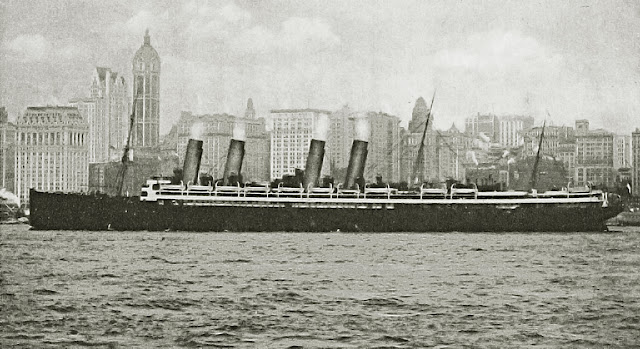
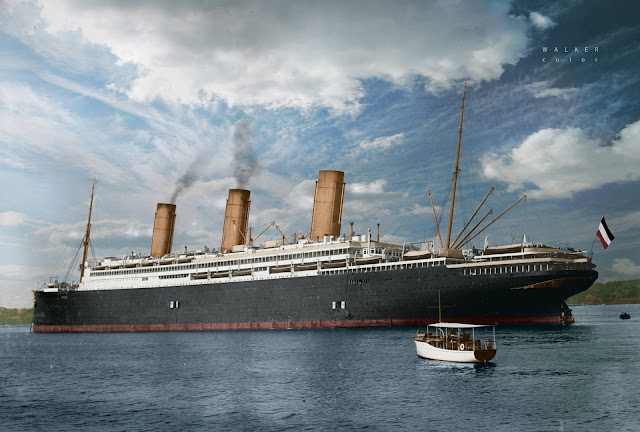

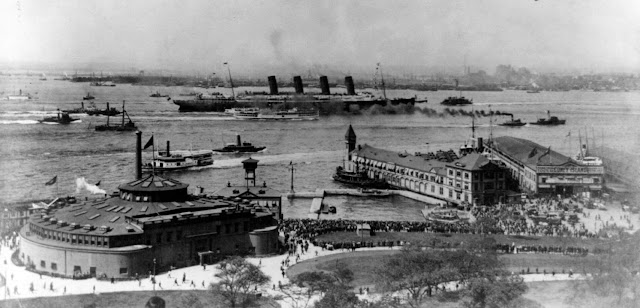

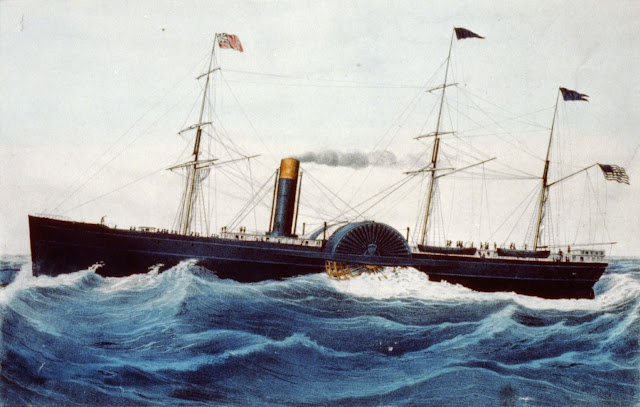
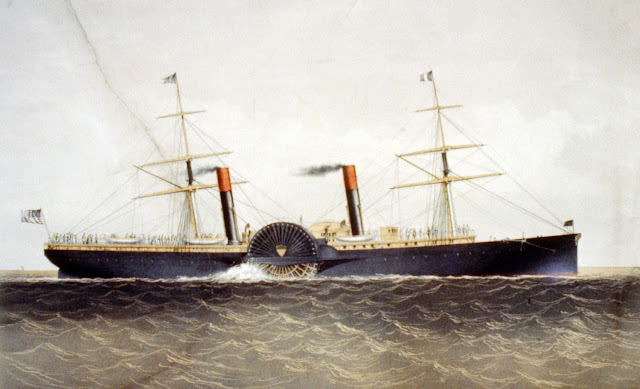











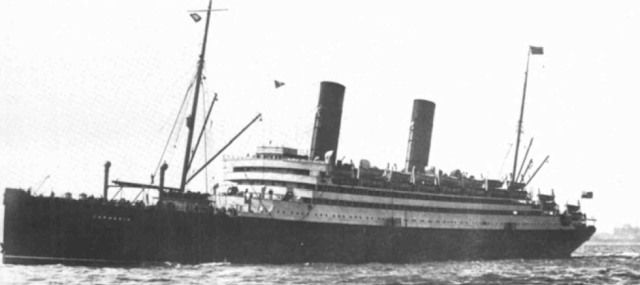



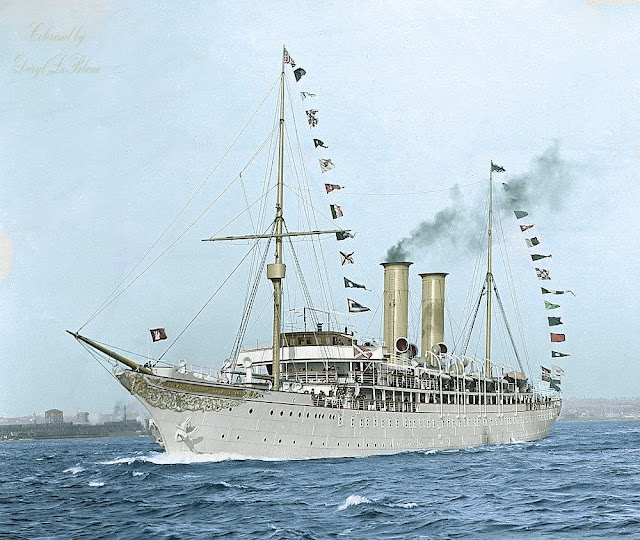


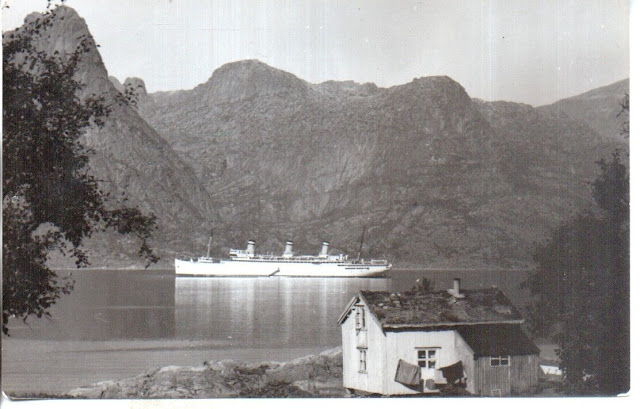





Comments
Post a Comment